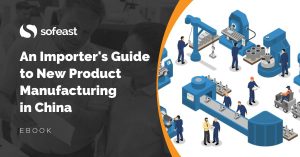We are regularly contacted by self-described inventors who believe very hard in their product idea but do NOT want to manage that product’s development, production, and sale.
They are often smart people, brilliant even. But they tend not to be business savvy, and that leads many of them to make costly mistakes.
This is especially true for electronic products and relatively complex mechanical products.
The million-dollar invention fallacy
The truth is, the proportion of new product concepts that are truly novel, solve a clear need, and create substantial demand (without the need for a marketing budget) right off the bat, is low. Quite low.
Many people think something up, do some of the design work (often just enough to communicate what it is and how it would work, without going into the engineering details), and they think the resulting intellectual property is worth a lot. Sometimes (I’d say 0.5% of the time), that is true.
So, what does the inventor do? He (in 99% of cases it seems to be a he, not a she) looks into registering a patent. If the product has been named, trademark(s) are also registered.
All those legal protections amount to a lot of money. Sometimes over 100,000 USD.
And that money is, in most cases, put down without serious market research. Potential customers/users are not presented with a mockup of the new product. (Otherwise, they would realize it’s a million-dollar idea and would run away with it, right? Or so the thinking goes.)
Big mistake. The risk of someone stealing the idea and getting to market first is MUCH lower than the risk of spending large sums of money on a product that has no market. I wrote about this in Patents Should Come After Market Success.
The problem is, just an idea is worth nothing.
Derek Sivers put it nicely in his article Ideas Are Just a Multiplier of Execution. “Ideas are worth nothing unless executed”.
And traditional investors follow the same logic. Without a working prototype in hand and a company already set up, there will be no funding.
And getting to the point where a prototype is approved can require a substantial investment.
So, where to find a non-traditional source of funding?
Many inventors look for a company to handle and finance the product development, handle and finance the manufacturing, find customers and drive sales, keep clean and accurate records of all the sales, and send a share of that amount to the inventor.
In other words, they want to do nothing on the execution side of the equation, where the value is created. And, in most cases, I have the impression that they end up disappointed. I have seldom seen that “licensing” or “royalties” model work in this context.
[Update: a reader pointed to the fact that some businesses are doing pretty well based on a licensing model. Fair point. But I would definitely not contact manufacturers in China to act as licensees.]
What is the proven model for bringing a new product to market?
What I would call “the classic way of bringing a new product to market” is as follows:
- Conduct market research to make sure there is demand and to identify what the top feature(s) is in the minds of customers
- Innovate on the product, without sinking disproportionate amounts of money in patents
- Find partner(s) that complement your skillset and can bring time & money
- Spend some more time to find ways to remove risk from the project: avoid custom-designed parts, keep the product simple in its version 1, etc.
- Invest some money to finalize R&D, until a final prototype has been confirmed, and use it to raise money from investors (or Kickstarter) if needed
- At the same time, start to work on your marketing channels (e.g. Facebook ads, a network of distributors…)
- Invest in opening the molds (if any), for the first production batch, and for selling the products
- Manage the whole process, especially on the marketing & sales side
I went into this in more detail before. I showed that founders have a lot of work on their plate.
Conclusion
It is a lot of hard work, and it is a risky venture. You really have to WANT it, and you have to believe very hard in your product. But that’s the point. If someone else is in charge of making your new product a reality, will he/she be as motivated as you?
Are you designing, or developing a new product that will be manufactured in China?
Sofeast has created An Importer’s Guide to New Product Manufacturing in China for entrepreneurs, hardware startups, and SMEs which gives you advance warning about the 3 most common pitfalls that can catch you out, and the best practices that the ‘large companies’ follow that YOU can adopt for a successful project.
It includes:
- The 3 deadly mistakes that will hurt your ability to manufacture a new product in China effectively
- Assessing if you’re China-ready
- How to define an informed strategy and a realistic plan
- How to structure your supply chain on a solid foundation
- How to set the right expectations from the start
- How to get the design and engineering right
Just hit the button below to get your copy (please note, this will direct you to a page on my company Sofeast.com):


